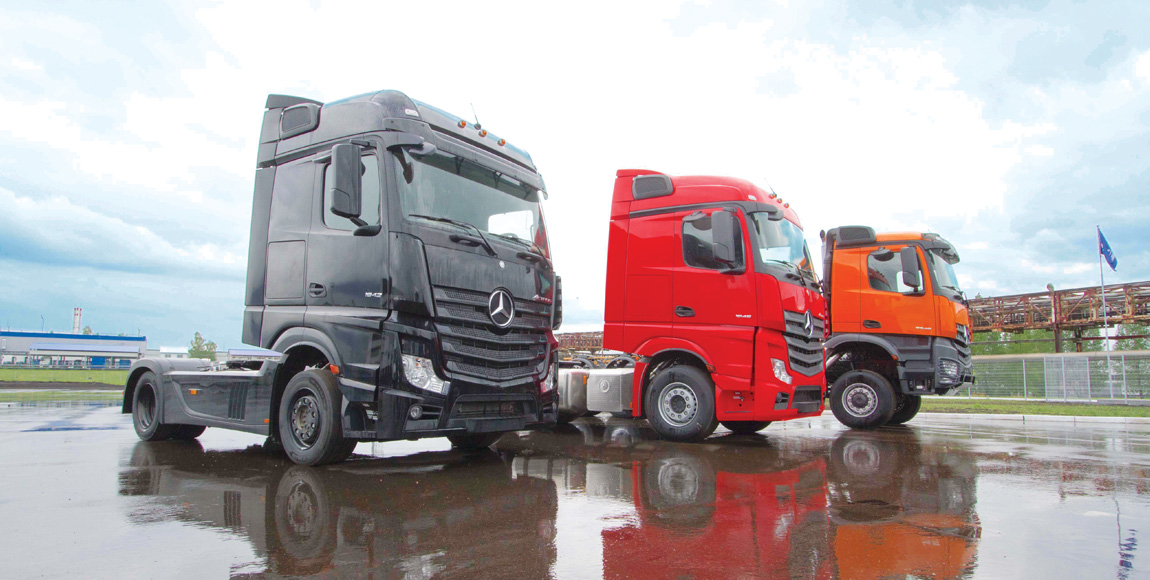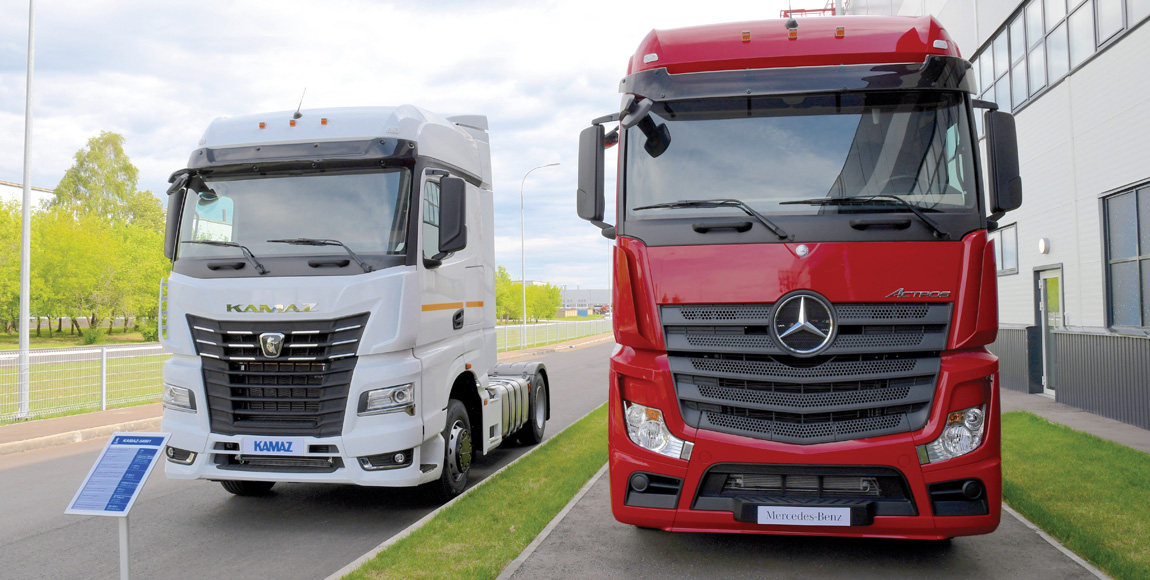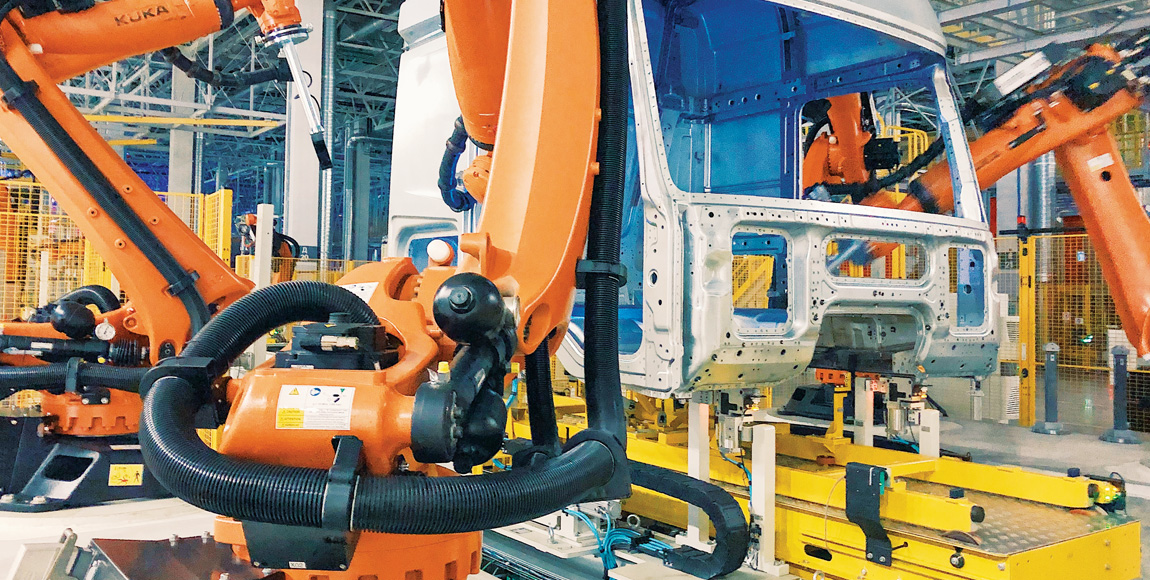Non-identical twins

A new cab factory – resulting from the joint venture between the Daimler Group and Kamaz – has opened in Chelny, Tatarstan. GIANENRICO GRIFFINI visited the new factory in the Russian Federation
With a production capacity of 55 000 units a year, the new factory in Chelny will manufacture Actros and Arocs cabs, in addition to the cabs for the Russian manufacturer’s new truck ranges.
German technology has joined forces with Italian design at the facility, which has a production capacity of 55 000 units a year when fully operational. It required an investment of €200 million (about R3,3 billion).
The Chelny factory has 700 employees and will manufacture the Mercedes-Benz Actros and Arocs cabs sold in the Russian Federation, in addition to new-generation Kamaz lorry cabs based on the same basic structure of the German models.
The Turin company, Torino Design, will be designing the exterior and interior of cabs for trucks used for distribution, long-haul operations and quarry/construction site activities. It will also be developing the engineering solutions, which include tolerances and assembly sequences for all components.
The new facility occupies an area of 59 600 m2 on the historic Kamaz production premises. It has 120 robotic workstations designed for sheet welding and assembly operations and a high-tech painting department, created by the specialist German company Dürr. 3D printers have also been installed for the production of plastic spare parts.
Outlook for growth
More than 500 articulated trucks were used to transport the equipment for the new facility from Europe to Chelny. The production site works closely with the Mercedes-Benz facility in Wörth, Germany, and represents another step in the global expansion of the Daimler Group.
Furthermore, it demonstrates the desire of the German manufacturer to develop a partnership with Kamaz, the undisputed leader in heavy-goods vehicles in the Russian Federation, to target the domestic market, which is receptive to positive developments in terms of the growth of sales volumes.

This has been in spite of uncertainties relating to the economy (the growth of gross domestic product for this year was revised downwards to 1,4 percent), fluctuations in the euro/ruble exchange rate (one euro is currently worth 72 rubles, but in February 2016 it reached 88 rubles) and high bank interest rates on loans for purchasing capital goods, which is now around 10 percent a year for customers with good credit ratings.
By opening the cab factory, the Daimler Group has also increased the localised production of components for the latest-generation Actros and Arocs vehicles, introduced in Russia in October of last year.
At the moment, more than 150 vehicle components come from suppliers based in the Russian Federation, who are required to guarantee the same quality standards as their German and Western European counterparts.
The decision to localise production was linked to the need to avoid import duties, which would make the vehicles less financially appealing to Russian hauliers.
Substantial differences
While the cab structure is the same for the Actros and new Kamaz 54901 vehicles (also known as K5), there are substantial differences to the external line, interior and elements of the driveline.

In the case of the Kamaz 54901, the engine is a six-cylinder in-line Liebherr model with a capacity of 12 litres. The strategic deal between the Russian manufacturer and the German company to develop a new family of 400 to 700 hp (300 to
522 kW) engines was signed in 2014, and production commenced with the first units in Chelny in March 2016. The gearbox is an automatic ZF TraXon 12-speed model.
The decision to have different drivelines differentiates the two different truck ranges in the domestic Russian market, avoiding range overlaps or situations of direct competition.
Since the joint venture was established in 2009, Daimler Kamaz Rus has assembled over 30 000 Mercedes-Benz and Mitsubishi Fuso trucks in Chelny and has sold them in the Russian Federation through a network of approximately 50 dealers located throughout this vast geographical region.
The cab design in the new Kamaz trucks – for a range of cabs that includes approximately 40 models, variants and versions – has the Italian touch provided by the company Torino Design, which has been in partnership with the Russian manufacturer since 2013.

“At the beginning of the partnership Kamaz basically wanted to restyle the models already being produced,” explains Roberto Piatti, CEO and managing director of the Italian design company.
However, in 2014, the Russian manufacturer reached an agreement with Mercedes-Benz to use the Actros cab structure in its vehicles, radically changing the design focus.
The Russian management team decided to stop the restyling process and concentrate instead on developing a new modular range of cabs. The characteristic of modularity – in relation to savings on investments for construction components – was one of the key concepts underlying the new cabs.
The project commenced between the summer and autumn of 2014, whereas the design of the templates was “frozen” at the end of the year.
Subsequently the 3D models were developed, and the vehicle samples cut to a scale of 1:1.
The initial presentations were delivered to the senior Russian managers in February 2015. At the same time, a demonstration lorry offering a wide range of innovative solutions was created for the industrial vehicle trade fair in Moscow in 2015. After several months of optimisation, the designs were set in May 2015.
Piatti says that the partnership with Kamaz has been different to relationships with lorry manufacturers in other countries.
“We usually deal with styling, 3D modelling and design templates through to the finalisation of the feasibility and design phase. However, in the case of Kamaz, we also dealt with all development and engineering.
“This complex task involved a team of 100 to 120 specialists. It wasn’t an easy task, as the Actros structure had to be combined with the original components of the Kamaz vehicles, while maintaining the Kamaz brand identity,” says Piatti.
Published by
Focus on Transport
focusmagsa



